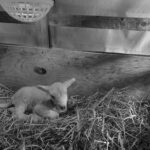
This time of year is the beginning of my favorite annual ritual—the sowing of the sweet pea seeds. I have grown sweet peas on both sides of the Atlantic for more than ten seasons. And while it is most definitely a challenge in our New England climate, it is always worthwhile. I sow the seeds by the end of February to plant out as soon as I can get them in the soil which is usually the end of March but this varies drastically from year to year (again, remember, New England!).
The plants need a head start so that they are flowering as soon as possible because once the intense summer heat arrives the flowering is over. Pretty much it equates to 4 months of growing the plants big enough to then support 4-6 weeks of flowering. But the smell is second to none and the perky little flowers keep producing as long as you keep cutting. I grow sweet peas on upright supports for beans.

Many books will advise against sowing them indoors citing that beans don’t like their roots disturbed. That is why I have had great luck using RootrainersTM which are 5” deep cells that open like a book to allow you to gently remove the young plant without disturbing the roots. You can also grow your plants in toilet paper rolls but I have found that the rolls start to mold and then fall apart before I get them in the ground. In a more temperate climate, like the UK, the plants don’t have to wait so long before going outside so the toilet paper rolls are more feasible.
I soak the seeds overnight before sowing them. This year I did not have time to plant the seeds but they had already been soaked so I went back to another technique I tried a few years back. I placed the seeds inside a wet, folded paper towel in a ziplock bag and then placed them in a warm, dark cupboard. After a few days about 30% of the seeds had germinated. After a week most of the seeds were ready for planting, and so was I!

At this point the seeds have a root, which sometimes has visible little hairs on it, and the stem. On almost all of the seeds the stem is bent like a fish hook and the root is straighter. Make sure to make a good sized hole, drop the seed in, root facing down, and then very gently fill in. The seedlings are actually pretty robust at this stage although you might think otherwise. A few years ago my daughter who was three at the time helped me plant the seeds at this stage.

Once planted, the RootrainersTM go on a heat mat inside a humidity dome. If you don’t have a dome, I have also placed wet newspapers on top successfully. They will need to be regularly checked and rewetted as necessary, though. You want to keep the sweet pea seeds out of light until they have emerged from the soil.
So that is where we are right now. In a few weeks I will show you how to pinch back the growing plants to get bushier vines and more flowers.

Oh, and one last thing: if you are going to the trouble of growing sweet peas, make sure to grow at least one of the varieties sold as heavily scented. You won’t regret it!






